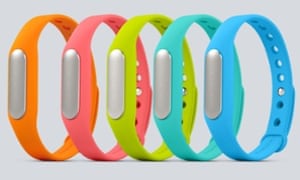Xiaomi becomes the second largest wearable maker, behind Fitbit
June 4, 2015 Kishore Ganesh Leave a comment

There are two ways to be successful in the technology industry: To offer innovative features that can be found nowhere else, or rip off all you want, but at a lower price.
While companies like Apple, Samsung and others may look towards the first strategy for their revenues, some upstarts like Xiaomi have found success with the second strategy.
What Xiaomi does is to offer top of the line and mid-range components in an extremely low price, making the whole proposition very attractive.
Xiaomi started it with Smartphones, offering flagship specs and killer designs in very cheap phones, leading to its phones becoming extremely popular in China and India. So popular, in fact, that Xiaomi managed to crack the list of the top 5 Android Manufacturers in the world, eclipsing the likes of even LG.
Recently, Xiaomi started to branch out to other categories with its strategy, and one of particular interest is its wearable. It offers fitness tracking features of a quality that is found in much more expensive fitness trackers
The clincher was that it was priced at a measly £20, when its competitors would ask for £100 and above, while offering basically the same functionality. Sure, competitors had designs that were more comfortable, and a feature here and there, but Xiaomi’s implementation was so good that most people didn’t even consider the more expensive wearables.
In fact, according to IDC, Xiaomi has become the second largest wearables manufacturer by units shipped, with over 2.8 million units sold in the first quarter alone, behind Fitbit, with 3.9 million units sold
Xiaomi holds nearly 25% of the wearables market, while Fitbit is a tier above with 34%. If this trend continues, Xiaomi may take the wearables throne away from Fitbit.
What do you think? Can Xiaomi conquer the technology industry? Does it actually make enough money, despite selling most of its devices at low margins?
Xiaomi becomes the second largest wearable maker, behind Fitbit | Tech Geek Forever
June 4, 2015 Kishore Ganesh Leave a comment

There are two ways to be successful in the technology industry: To offer innovative features that can be found nowhere else, or rip off all you want, but at a lower price.
While companies like Apple, Samsung and others may look towards the first strategy for their revenues, some upstarts like Xiaomi have found success with the second strategy.
What Xiaomi does is to offer top of the line and mid-range components in an extremely low price, making the whole proposition very attractive.
Xiaomi started it with Smartphones, offering flagship specs and killer designs in very cheap phones, leading to its phones becoming extremely popular in China and India. So popular, in fact, that Xiaomi managed to crack the list of the top 5 Android Manufacturers in the world, eclipsing the likes of even LG.
Recently, Xiaomi started to branch out to other categories with its strategy, and one of particular interest is its wearable. It offers fitness tracking features of a quality that is found in much more expensive fitness trackers
The clincher was that it was priced at a measly £20, when its competitors would ask for £100 and above, while offering basically the same functionality. Sure, competitors had designs that were more comfortable, and a feature here and there, but Xiaomi’s implementation was so good that most people didn’t even consider the more expensive wearables.
In fact, according to IDC, Xiaomi has become the second largest wearables manufacturer by units shipped, with over 2.8 million units sold in the first quarter alone, behind Fitbit, with 3.9 million units sold
Xiaomi holds nearly 25% of the wearables market, while Fitbit is a tier above with 34%. If this trend continues, Xiaomi may take the wearables throne away from Fitbit.
What do you think? Can Xiaomi conquer the technology industry? Does it actually make enough money, despite selling most of its devices at low margins?
Xiaomi becomes the second largest wearable maker, behind Fitbit | Tech Geek Forever
Last edited:
